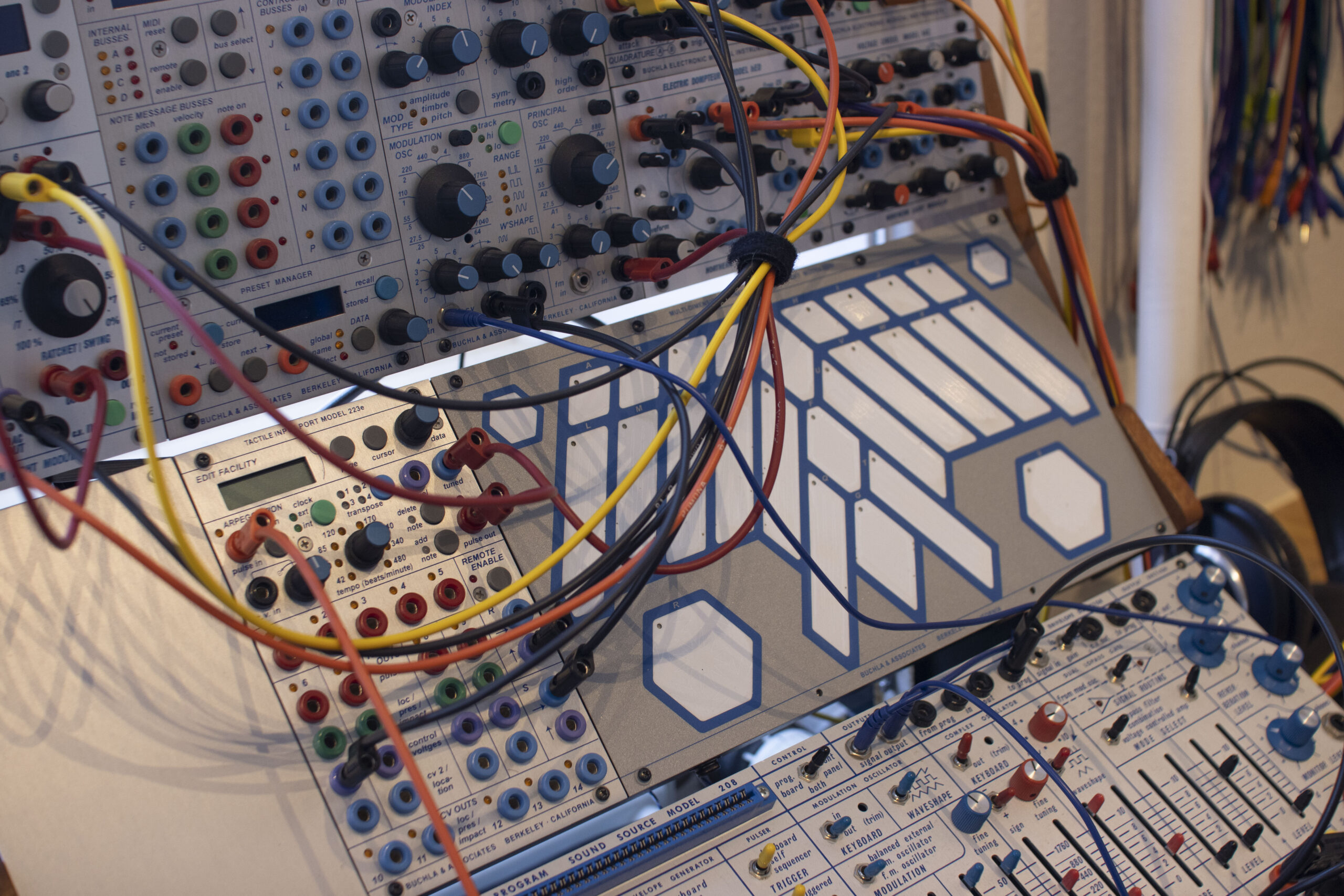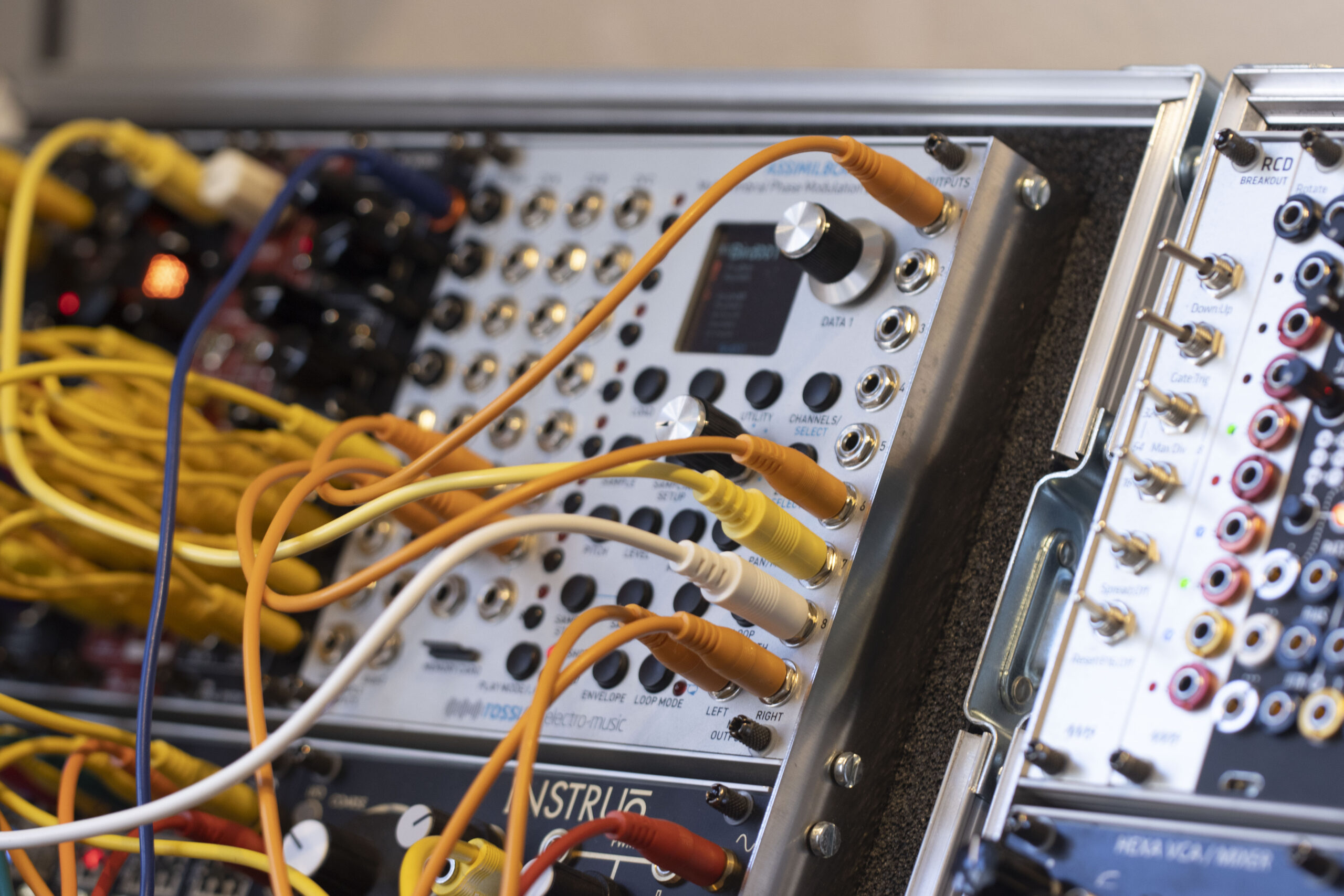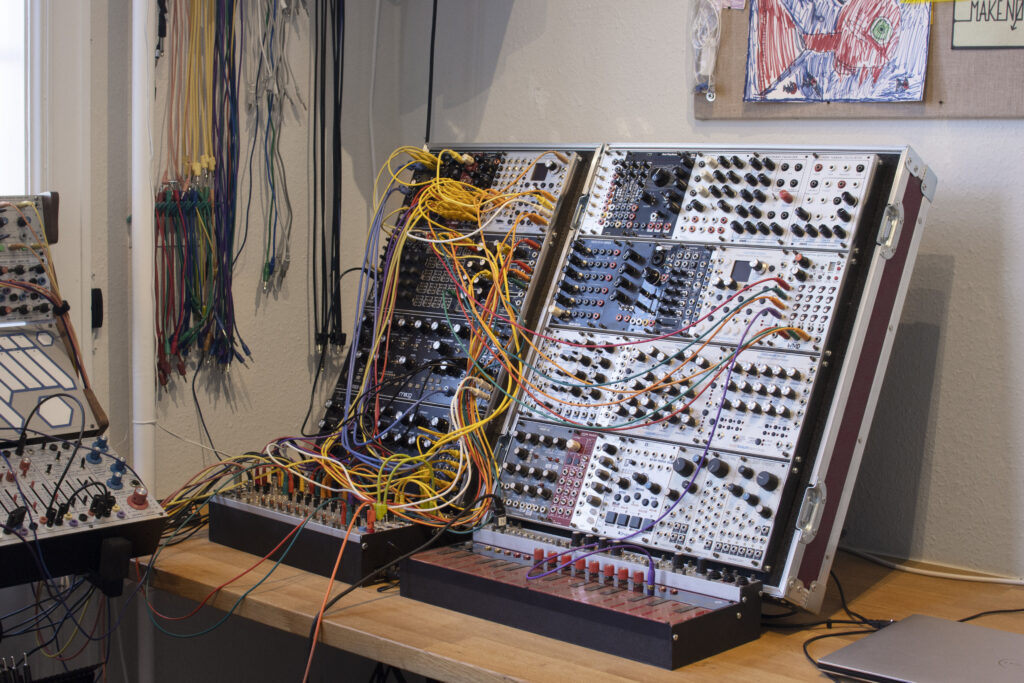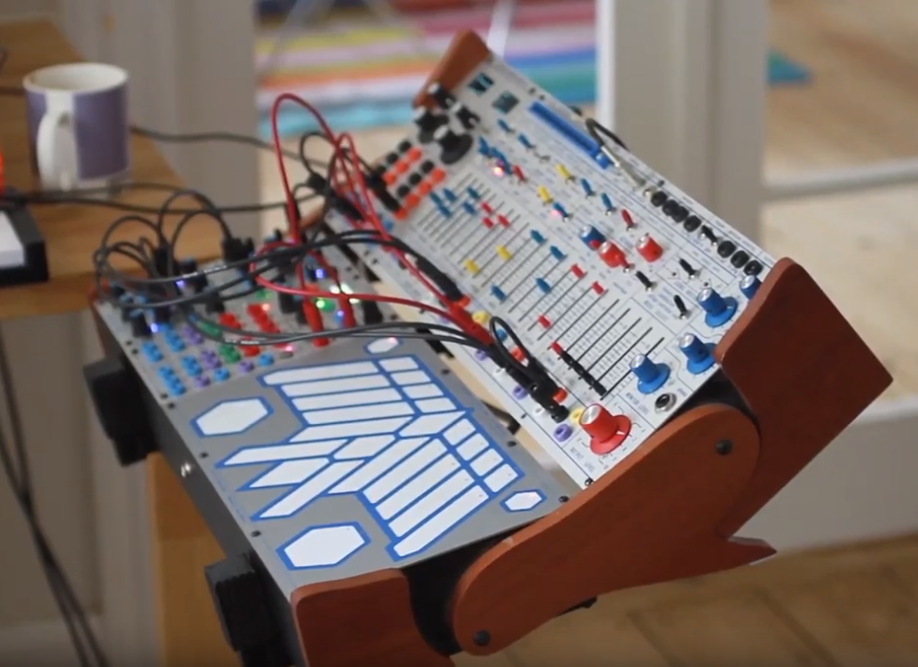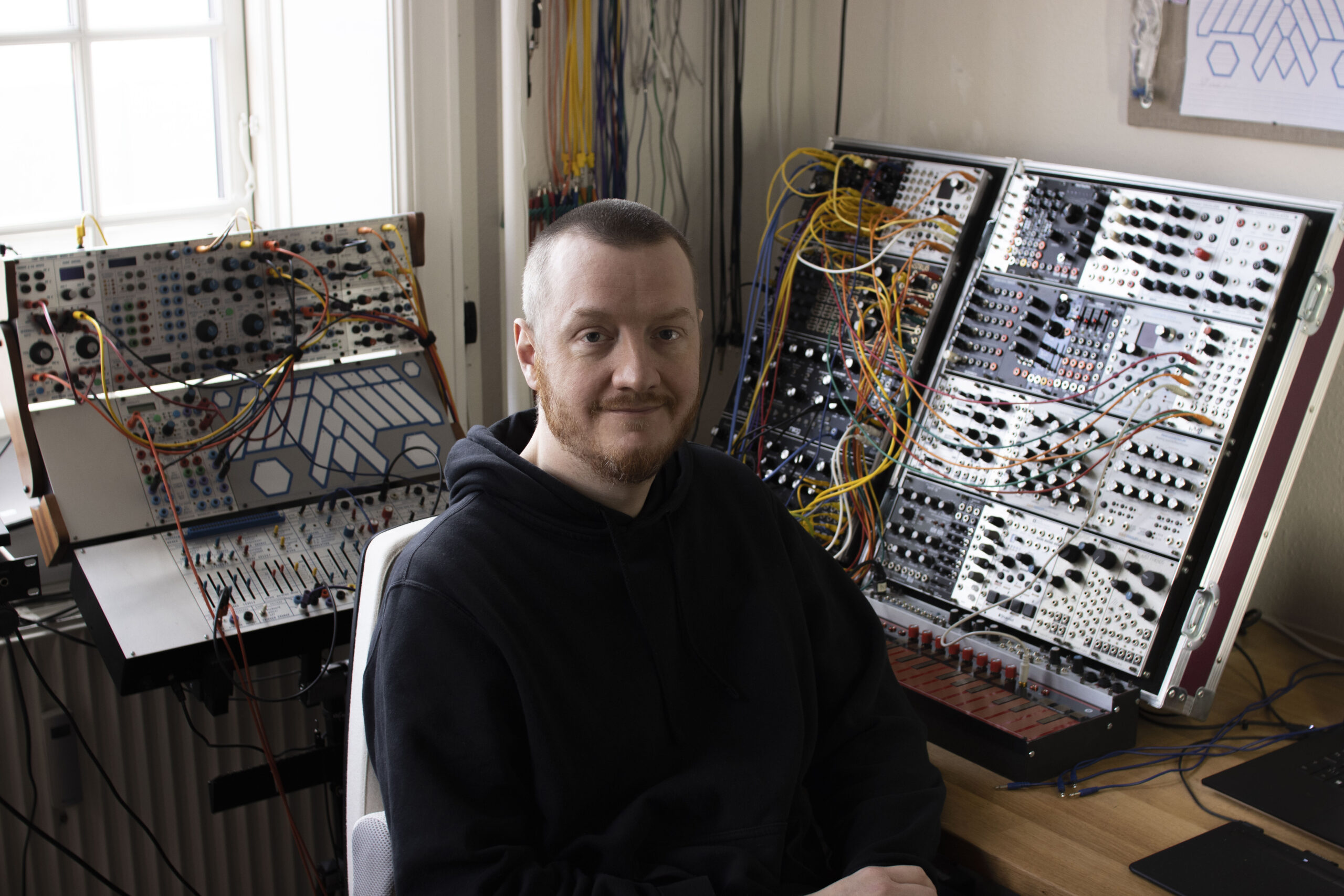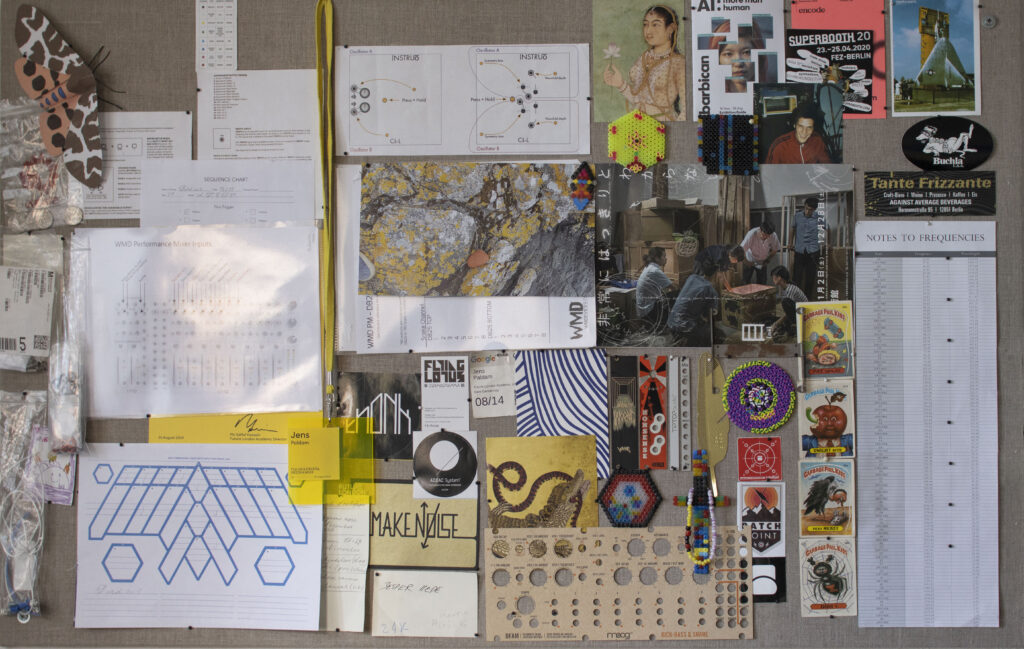1. Favourite knob/fader/switch on a piece of gear and why?
From eurorack modules, I really like the white knobs on Vermona and the keys on the NerdSeq is just fantastic. Both Modules have a good build quality. Also the patch cables from Instruo and Vermona I really enjoy using because they are great quality.

2. Do you have an ‘almost’ perfect bit of kit? What would you change?
Well yes, but mostly no 😉 I primarily use eurorack, so there is always coming and going modules in my system, but that’s a big part of the fun in eurorack, at least for me. Last year I bought around 140 -150 modules and sold maybe around 100. I cleaned out a lot and tried getting rid of the modules that didn’t fit my workflow and purpose. I’m currently down to 1750 HP which I feel is a good size for my home studio. [Editor: May I, on behalf of all the readers, say ‘Woa!’]
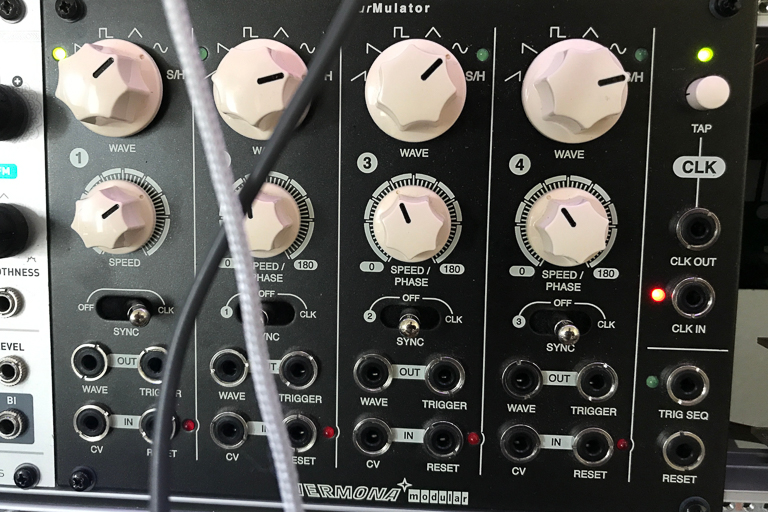
3. What setup do you bring on holiday/tour/commute etc.?
Holidays?? For Modular meet-ups I used to carry a medium and a large flightcase, plus a big backpack with cables, but it turned out I damaged my back by carrying this. So for the time being i’m down to a 60 HP case from 4MS. I think I will get the Intellijel Palette soon though. It seems to have a good size for a small backpack.

4. What software do you wish was hardware and vice versa?
Orca from Hundredrabbits. It can run on Monome Norns, but the display is small and it’s not eurorack. I would really like a dedicated hardware module with a large screen for that. I don’t wish for any modules to become software.

5. Is there anything you regret selling… or regret buying?
Yeah a lot of things.. Roland TR8s was surprisingly awesome, and I regret selling it. (Did you know that you can multitrack record the channels on the TR8’s directly to your DAW with usb. It’s quite awesome, most synth boxes just pop up as a Stereo Master). Hermod and Pyramid from Squarp, OTO BAM, Orthogonal Devices ER-301. And of course all my 12 Amiga’s I had through time. I really wish I still had them all. Regrets from buying, sure, lots. There will always be many regrets when buying eurorack modules no matter how well you research modules. Period!
6. What gear has inspired you to produce the most music?
It’s kinda of weird, but I was fascinated by RF noise since I where a kid. For space sound textures I like the CW-upper sideband and CW-lower sideband the most. Running it thought various filters never disappoints me. Lately I’ve been “resynthesizing“ it through Panharmonium, and it can create some crazy wicked sounds, as well as nice random melodies.
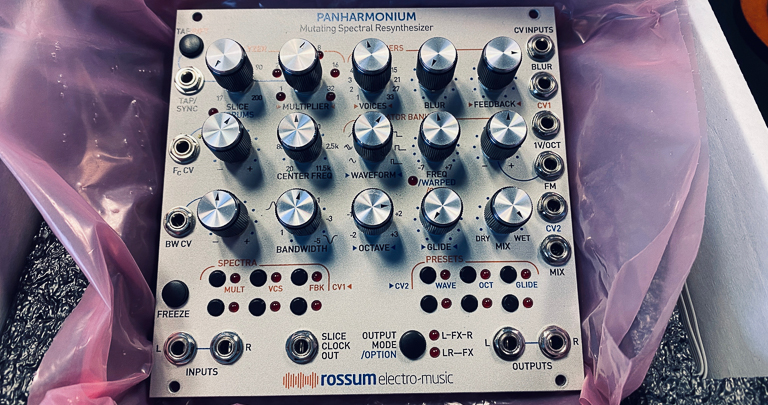
7. If you had to start over, what would you get first?
From standalone synths I would most likely buy Syntrx from Erica Synth and Tracker from Polyend. On eurorack modules I would start with what I know is good for me. NerdSeq, Trident, Panharmonium, and various standard modules. I have a long list in my head 🙂
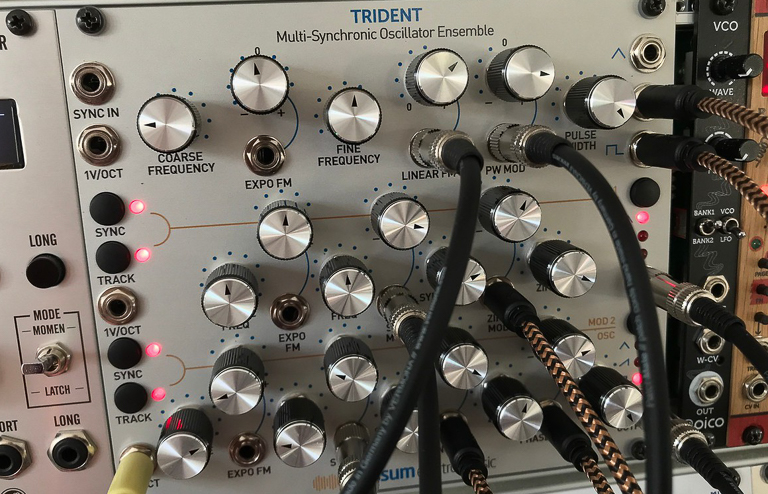
8. What’s the most annoying piece of gear you have, that you just can’t live without?
Besides the obvious; my computer. Then it is the Clouds and Rings. I currently don’t have either, but I have a Rings on the way again 🙂
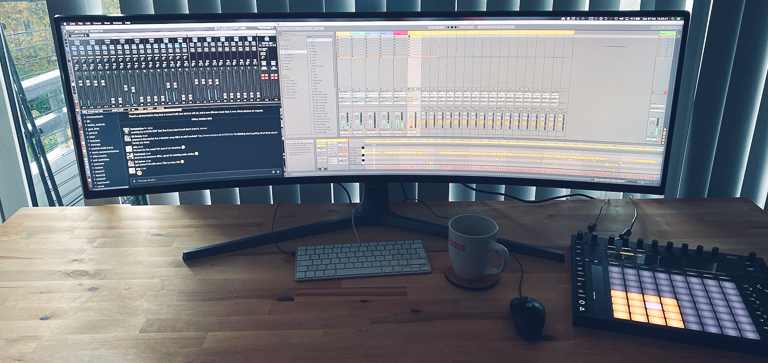
9. Most surprising tip/trick/technique that you’ve discovered about a bit of kit?
I guess it is what I mentioned before. Any RF noise from an AM radio and the Panharmonium or just some nice filters. Wasp and Belgrad are great for this.
Artist or Band name?
Franksemi
Genre?
Interstellar soundscapes & ambient
Selfie?
Uffff.. but ok
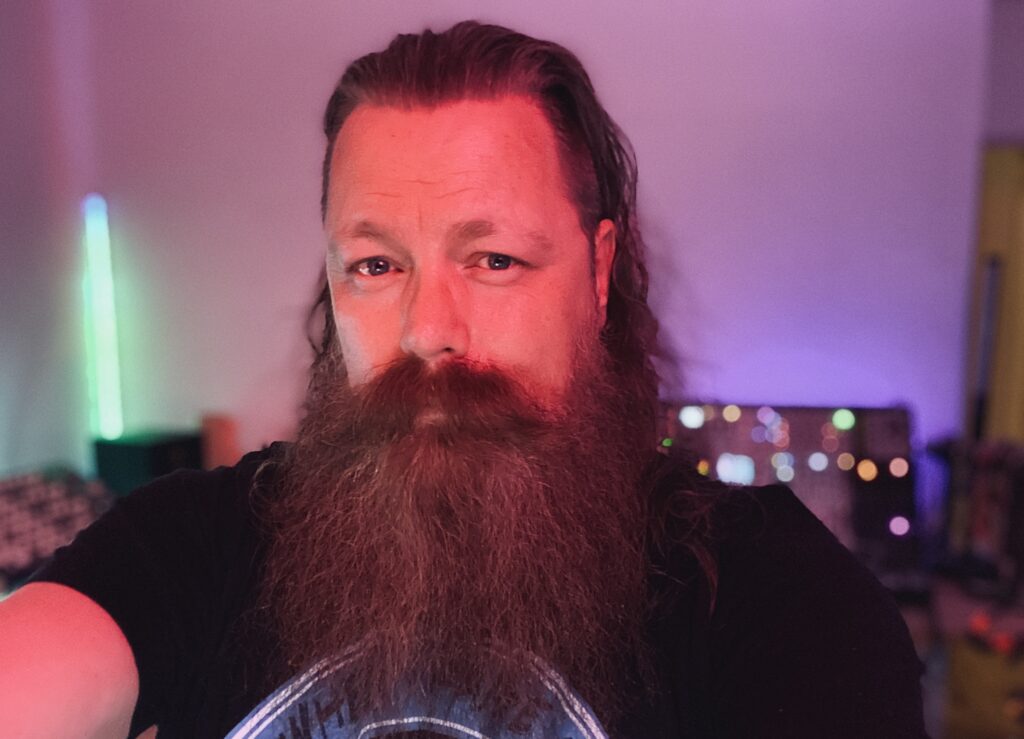
Where are you from?
Denmark, Northern Jutland, Countryside. Raised by my Grandparents.
How did you get into music?
My uncle was teaching me how to play guitar every Sunday afternoon from when I was around 6 years old. But I lost interest in that after a while and somehow I also managed to break the guitar in half.. I don’t remember how and why, but I most certainly remember making up a cover story, so that my Grandparents would not get angry at me 😀 I can’t believe they fell for the story. I put the guitar back together as good as I could and placed it between some heavy wooden boxes so that it looked like the boxes had fallen and broken it… haha 🙂 Then I moved on to bass, and then tried drums for a bit. I also got tired from that pretty fast. Then when I was 13, the Amiga popped up and I was hooked on Protracker for some years. Later I got access to a 303 and borrowed a 606 for a while. Then it was mostly software for many years and next a 15 year break from making any music. Three years ago I split up with my x-girlfriend after many years together, and I needed to do something creative again, so I started building my first Eurorack flight case. And from there I started with Eurorack which was something I wanted to do for years.
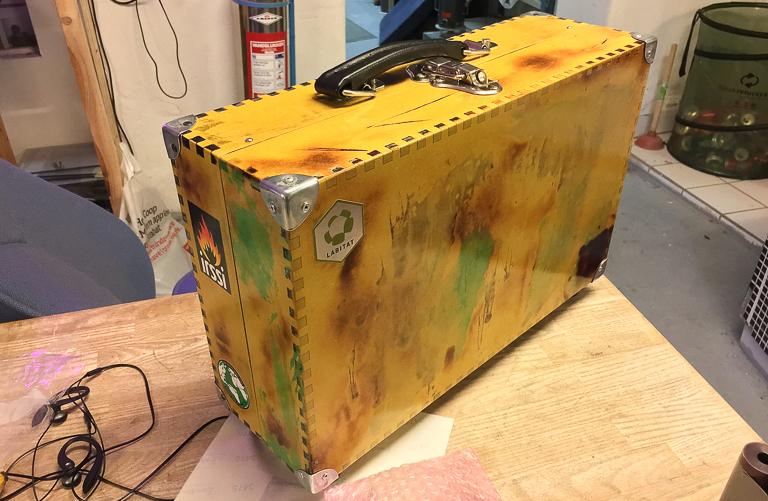
What still drives you to make music?
I don’t know if what I make is considered music, at least not in a traditional way. I would just categorize it as making space soundscapes & textures for my own personal meditative pleasure, and that is really what drives me. That and making something creative, which I have always done one way or another. I always imagine myself how I would enjoy these sounds while leaving this solarsystem in a spaceship. Plainly put; sounds for space travel. But I also think of it as kind of alien communication that I am still trying to learn. Sometimes I would call it ‘Sound Design’ but that’s probably a stretch 🙂
How do you most often start a new track?
I just start a new patch and see what happens.
How do you know when a track is finished?
I never finished a ‘real track’, at least not for many years. I often just make patches and let it run for a couple of nights, sometimes a week or more. I like falling asleep to that, instead of just putting on some random DI stream etc. Most of time I don’t even bother to record it, cuz it is too much of a hassle and I often have problems with getting the levels right etc. But sometimes I put a small video clip on Instagram, but not so much anymore.
Show us your current studio.
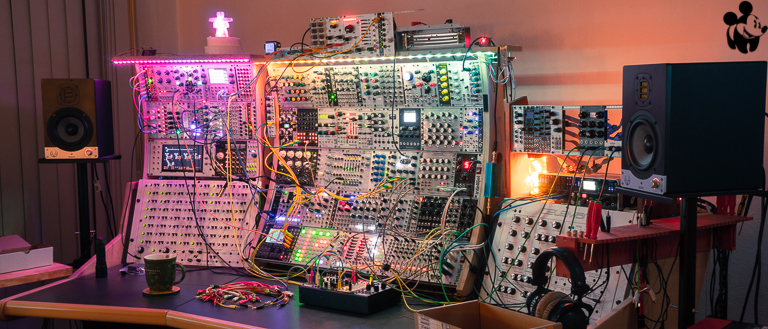
Best creative advice that you’ve ever heard?
When I was in Art academy in Kolding 25 years ago, I had a teacher that told me that the best art is always something you made 20 years ago. That was funny back then, cuz I asked if he meant, that I made art like a 5 year old. But no, seriously, depending on how you will interpret it, I think this can apply to music as well. I will let you think upon that for yourself.. 🙂
Promote your latest thing… Go ahead, throw us a link.
You are very welcome to follow me on Instagram: https://www.instagram.com/franksemi/
[Editor: Eurorack modules: Too much or Never Enough? Leave a comment below. ]

